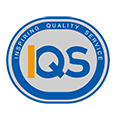Pre-shipment inspection , also spelled Final random inspection or PSI , is a part of supply chain management and an important quality control method for checking the quality of goods clients buy from suppliers.
PSI ensures that production complies with specifications of the buyer and/or the terms of a purchase order or letter of credit. A final random inspection (FRI), checks finished products when an order has been 100% produced and at least 80% of export-packed. Samples are selected at random, according to standards and procedures.
Advantages of Final Random Inspection
There are lots of benefits to a PSI/FRI, but most people agree that guaranteeing the quality of goods produced overseas, at the place where they were manufactured, is its final solution?
This quality control procedure also saves a fair bit of time. Once the goods are in the country of destination, correcting faults becomes costly and requires additional shipping and time delays. Identifying any faults and errors in the batch before you ship will be more easier for suppliers to rectify any issues
Pre-shipment inspection can diminish risks inherent to Internet commerce like phishing and fraud.
Whether you use in-house staff or a third-party quality control agency, there is a single standard for sampling procedures and acceptance criteria that the majority of PSI inspectors follow.
Acceptance Quality Limit Table (AQL Table)
The so-called AQL Table is widely used for consumer goods Pre-Shipment Inspections in Asia and throughout the world. This clever model uses statistical number crunching to define the highest acceptable number of defects in a batch (i.e. how many faults a buyer can tolerate) before it is rejected.
The AQL varies between industries, so it always provides a balanced, unbiased view. You can further tailor it to your needs based on your quality expectations.
Sampling Plans
Inspectors won`t test every item individually. Instead, they`ll use sampling plans (cf. ISO 2859 or ANSI/ASQ Z1.4-2008) to determine how many samples they need to pick randomly to get an accurate overview of the quality of the whole shipment. This means savings in time and money for you - particularly useful if your inspection date is close to shipping.
The general inspection level III is the most extensive check and samples a larger portion of the shipment compared to a general inspection Level I test at the lower end of the scale. Choosing your AQL general inspection level will depend on the quality risk you are facing and the type of products you are checking. For general consumer goods, we recommend at least a general inspection level II, while automotive or medical products should be tested at the general inspection level III.
Inspection Defect Classification
Depending on the needs of the importer, sampling during the pre-shipment inspection can be used to verify different measures of quality. One of the most commonly used within the consumer goods sourcing industry is to classify the defects as either: critical, major or minor and define an acceptance quality limit (AQL) for each one of them, then AQL Table will be completed in final inspection report.




